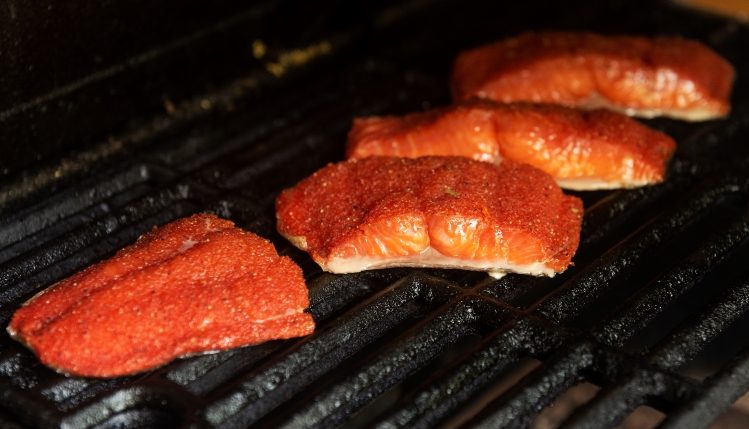It’s the best time of year to grill and smoke meat — and it’s currently in the middle of the wild Alaskan salmon season (April through September). Salmon is great grilled, baked, poached, broiled and cured, but my favorite is hot smoked. It does take a little planning, including 10 minutes in the morning to make and rub with seasoning and then another 30 to 45 minutes to cook for individual portions (longer for a whole fillet). This leaves you with three options: eat now, chill and eat later, or both. The hot smoked salmon is great served immediately off the grill, but it is also great cooled and served as an appetizer with toast the next day, in an omelet, eggs Benedict or just about anywhere else you want to add a little salmon. The curing/seasoning time is much shorter and easier than lox and smoked salmon and can be used in many of the same applications.
Prep Work
Talk to the butcher or fishmonger when purchasing the salmon and they will be happy to help you pick a nice fillet or even cut a larger one down. The butcher can also check for pin bones when you purchase the salmon (most of the time they have already been removed if purchasing from a store). When you get home, keep the salmon cold until you are actually going to season it. You could buy the salmon a day or even two days before you are going to cook it, but I would not recommend any purchasing any further in advance than that. When you are ready to season (remember this will need to be between 4 and 24 hours before you actually want to cook it), rinse it thoroughly and check the skin side to make sure all of the scales have been removed. If you do happen to find a missed pin bone they will easily pull out with needle nose pliers.
Seasoning
Salt is really all that is needed to season the salmon and it helps draw out some of the moisture and intensify the flavor. Sugar helps balance out the salt and round out some other flavors. Pepper, garlic and herbs are also great additions, but it just depends on the flavor profile you are going for. Many recipes for cured or cold smoked salmon call for Curing Salt 2 or Tinted Cure Mix (contains a small amount of sodium nitrate) that helps set the color in the salmon and inhibits bacteria growth. If you have a favorite cure recipe, feel free to use it, just cure half the time you normally would — it’s just to season all the way through, not to draw out all the moisture. You can season in a container, but I like using plastic wrap or a zip closure bag so I can keep the cure closer to the salmon.
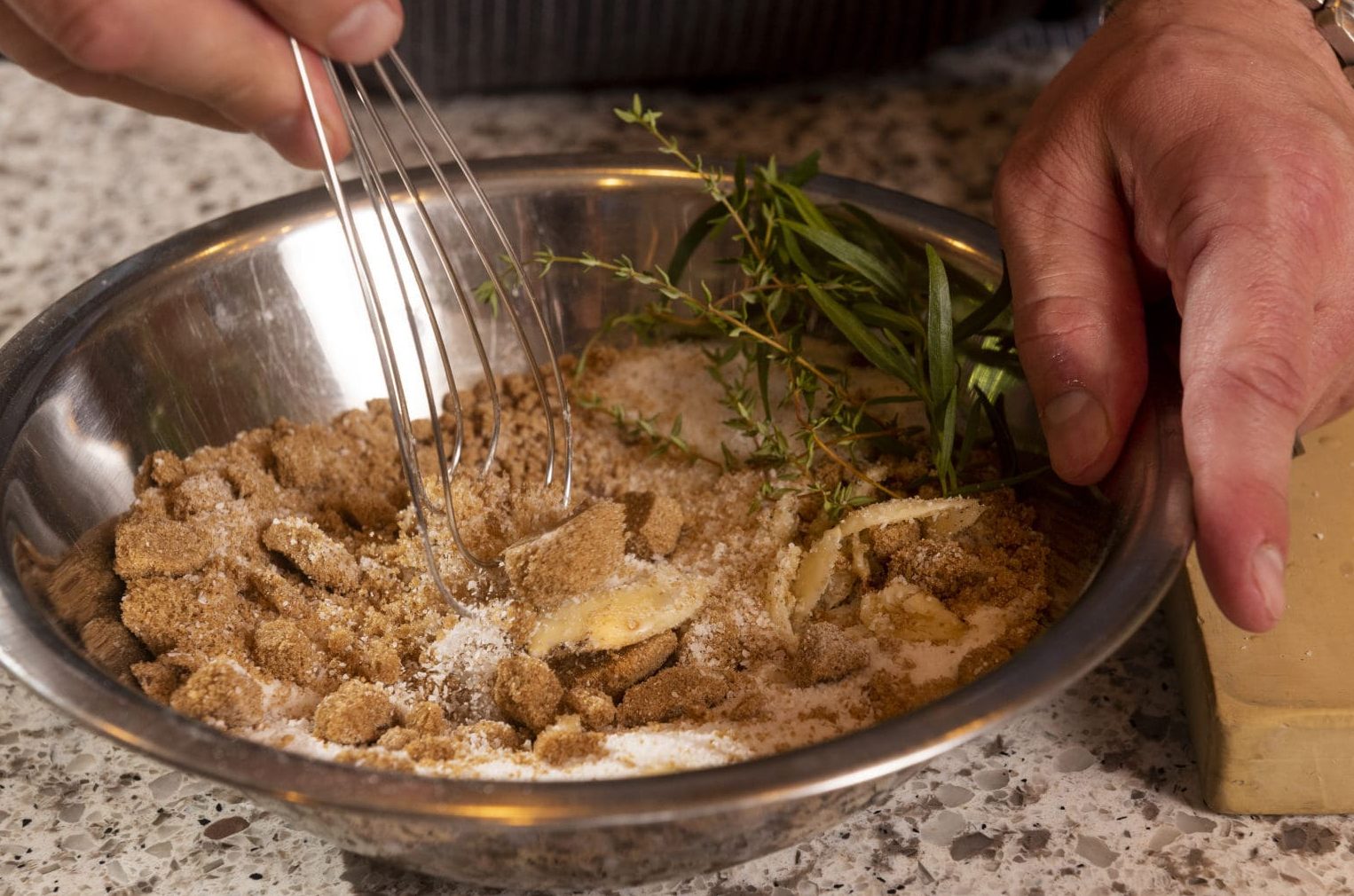
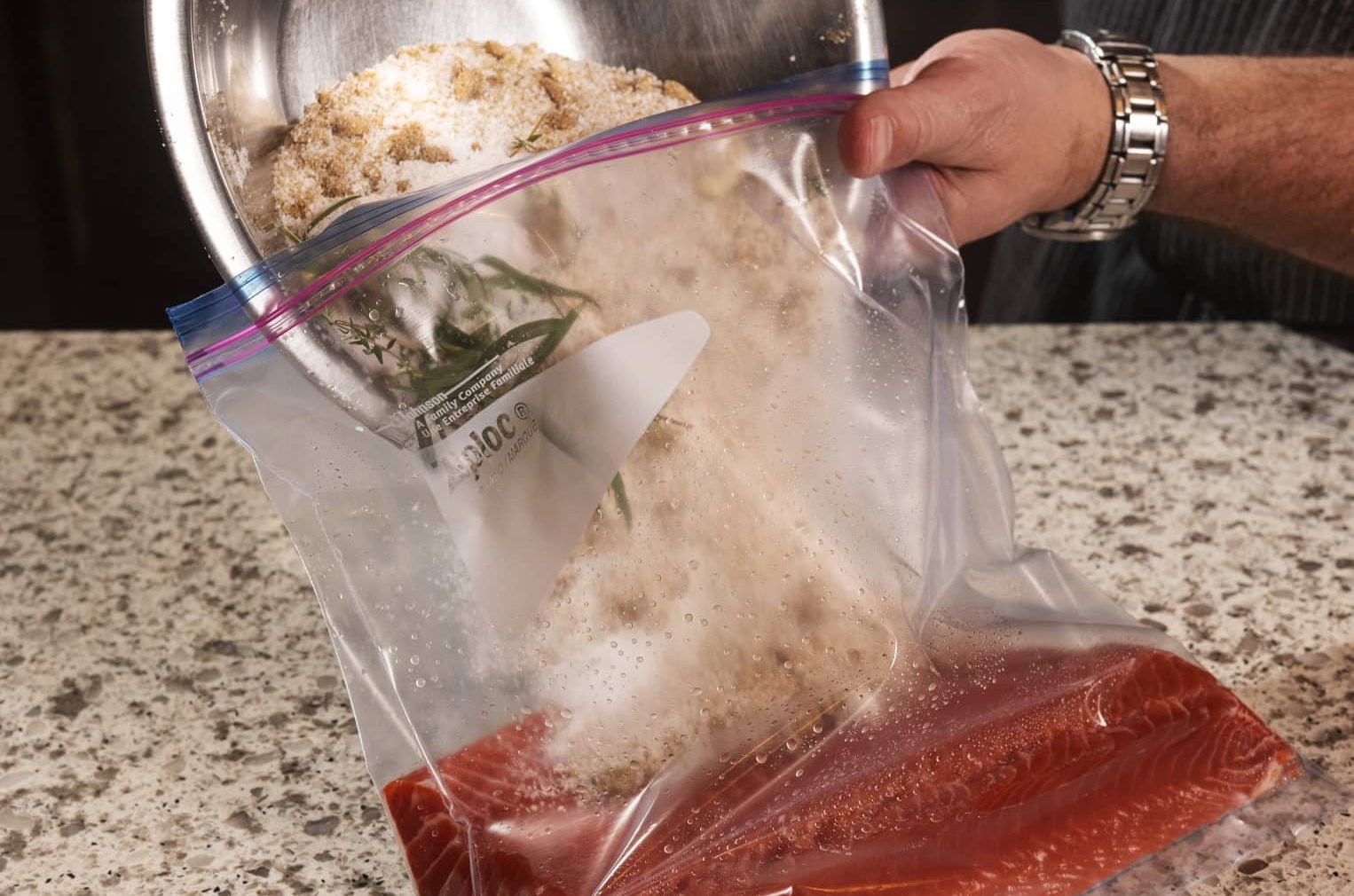
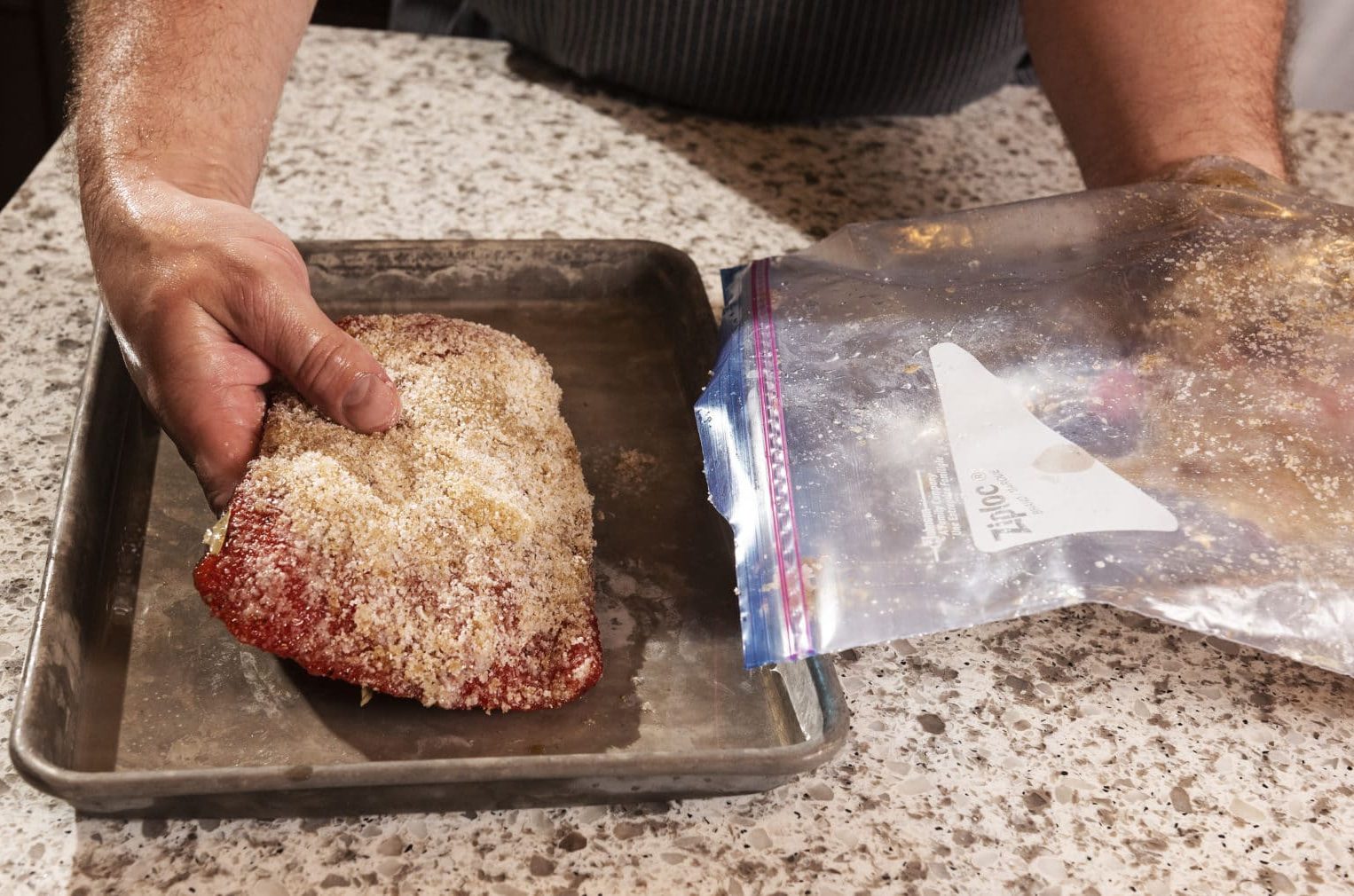
Dry
After the salmon is cured, you want to rinse it thoroughly. If you don’t want to smoke the salmon as a whole fillet, this is the best time to portion it. Dry it with a paper towel and place it on a rack uncovered in the refrigerator for 4 hours to overnight to let the surface dry (make sure you have something under to catch any drips). Smoke does not stick to wet surfaces, so you want the surface dry and tacky. This is called the pellicle. The smoke flavor will stick to it and you will also develop a much better outer crust on the salmon that is a great texture contrast.
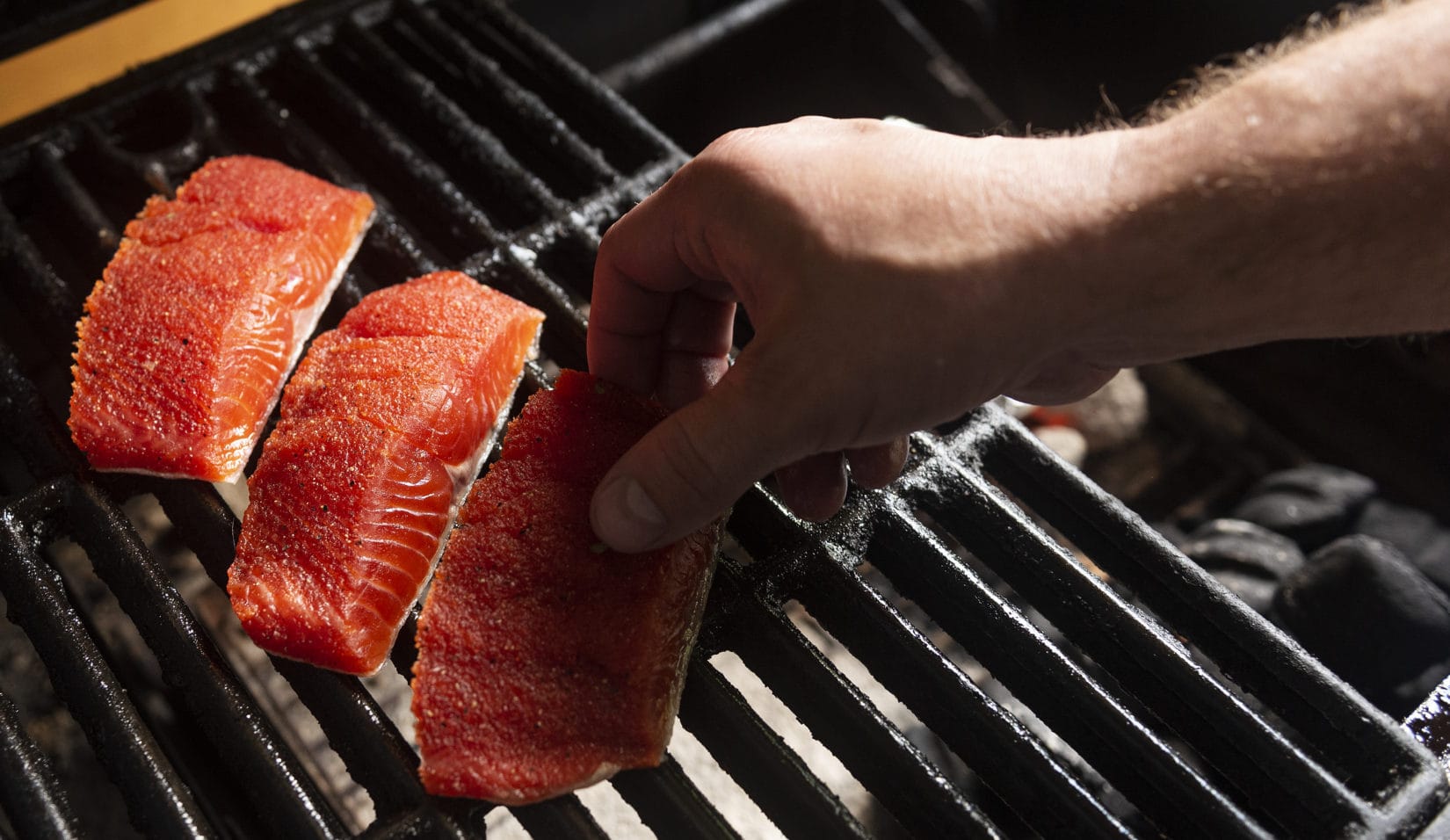
Cook
If you have an electric or gas smoker, just use as normal, setting the temperature between 225 and 250 F and cook until the internal temperature is 140 F in the thickest part. If you have a charcoal grill, place about a cup of wood chips in a container and cover with warm water and reserve. To the side of the grill, make a pile of eight to 12 briquettes and light. Once the briquettes have all ignited and are coated in white ash, drain about ¼ cup of wood chips and place them on top of the briquettes. Place the grate back on the grill and place the salmon on the opposite side of the fire. It helps to spray the grate with a little cooking spray or lightly oil to prevent the salmon skin from sticking. Close all of the vents on the bottom, and adjust the top vent by closing all the way and slightly opening. You want to smother the fire just enough to get a large amount of smoke, but not enough to kill the fire. Depending on the thickness of the salmon, it will take 30 minutes to 2 hours to get to 140 F, but smaller individual portions may cook more quickly.
Once the salmon is at 140 F, it can be served immediately. You can treat it just like any portion of fish and serve it as a main course. It also makes great leftovers. If you are cooking dinner for the family in the middle of the week and hosting a party or need to have a dish to take to a party over the weekend, smoke an extra fillet. There is not any more work to do, just double the recipe and chill the cooked salmon uncovered for 4 to 6 hours, then wrap tightly with plastic wrap or put into a bag. It can be served with lemon wedges to squeeze, dill, cream cheese or crème fraîche, capers, thinly sliced cucumbers, crackers, crostini or anything else you would like. You can just put the whole fillet on a platter with the accompaniment and a fork. The cooked salmon will flake off easily and the guests can easily assemble their own canapés.
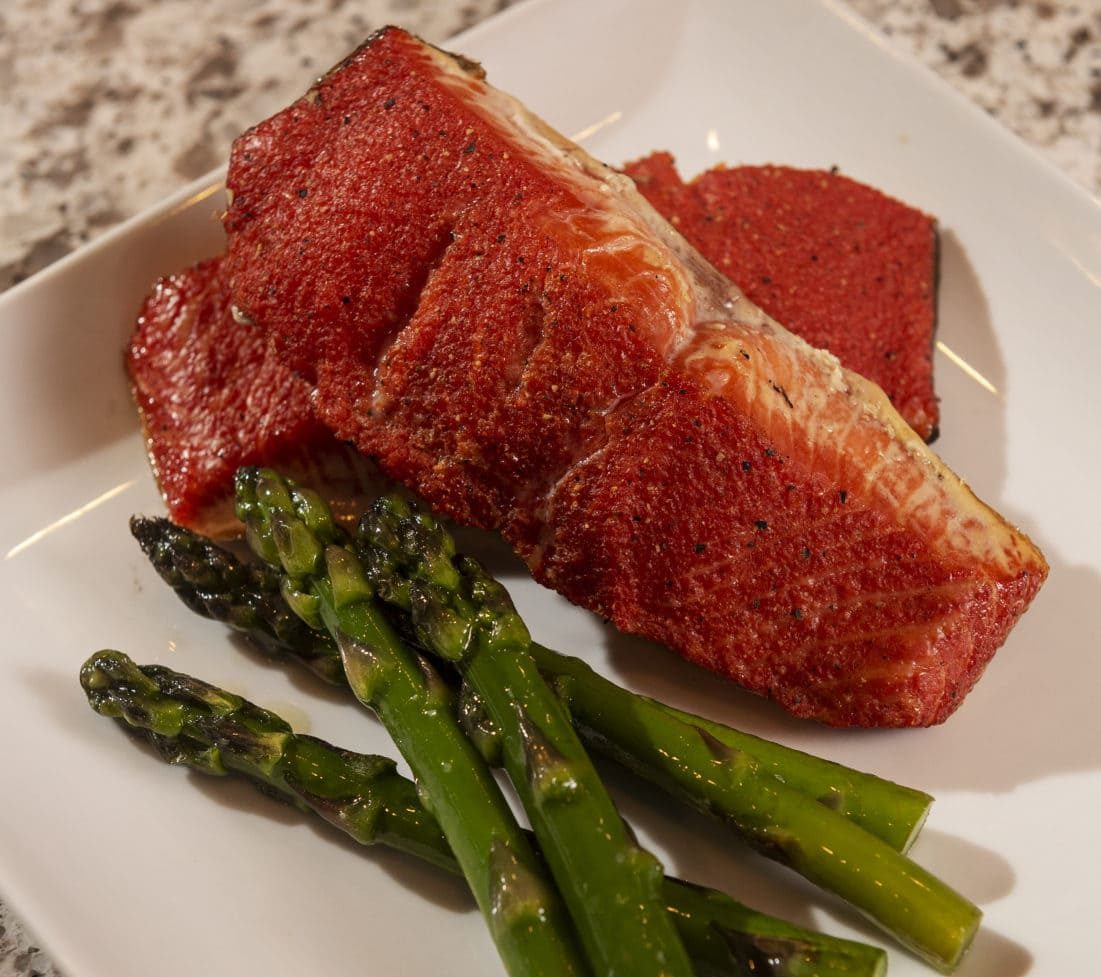
Hot Smoked Salmon
1 cup kosher salt
½ cup granulated sugar
½ cup brown sugar
Herbs (a few sprigs of thyme, tarragon, dill
or parsley)
1 teaspoon ground black pepper
Rinse the salmon and make sure all the pin bones have been removed. Place the salmon in a plastic bag or container. Separately mix all the ingredients then spread the seasoning on the skin and flesh side of the salmon. Place back into the refrigerator for 4 to 24 hours. Remove the salmon, rinse thoroughly and pat dry with a paper towel and place back into the refrigerator for another 4 to 6 hours (if you dry really well, you can smoke right away if you are in a rush). Smoke over indirect heat for 30 to 45 minutes for individual portions and up to 2 hours for thicker, full fillets. See cooking section above for more info. Once the salmon is 140 degrees Fahrenheit, it can be removed and served or chilled to be served cold later.
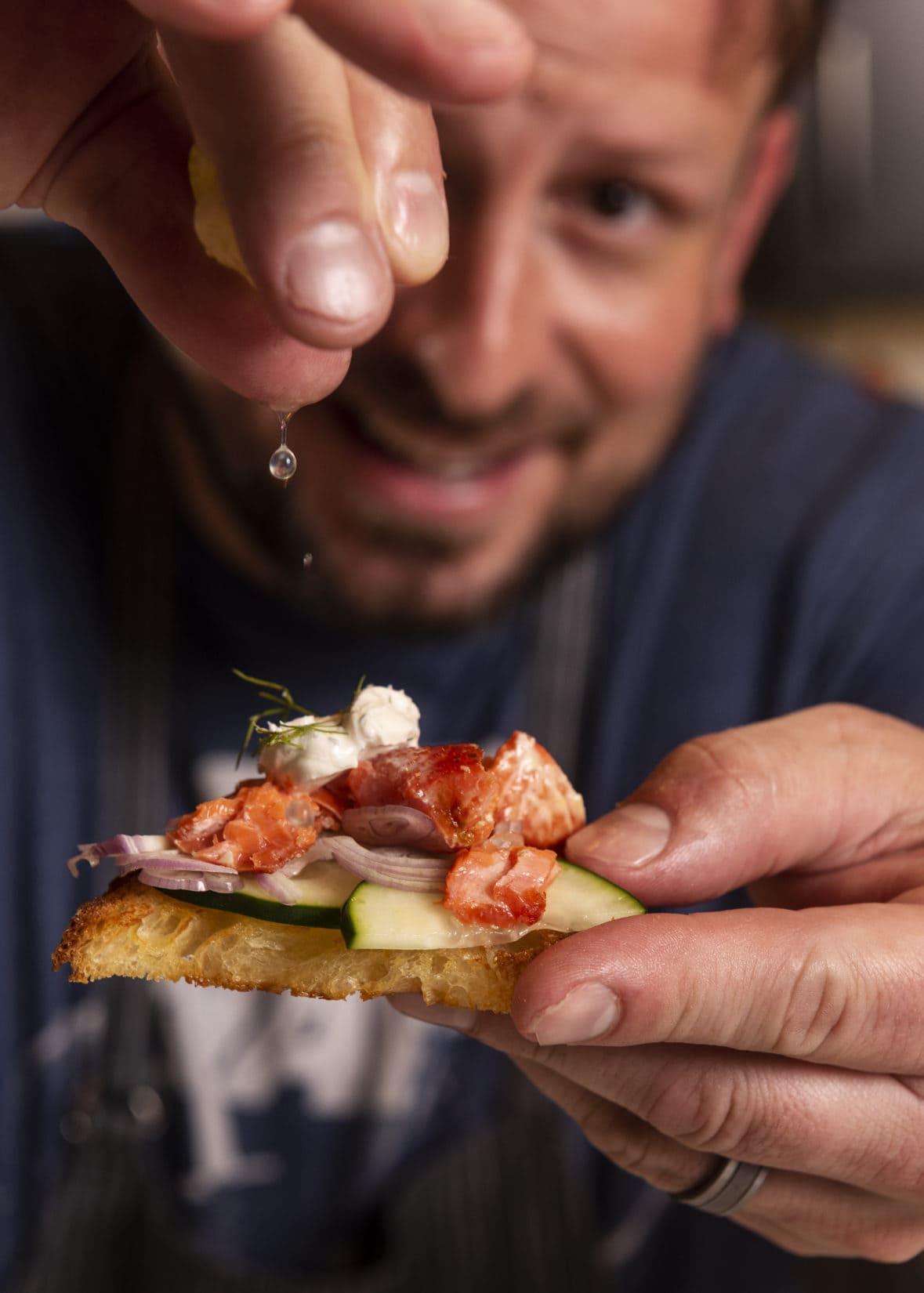
Brook Harlan is a graduate of the Culinary Institute of America in Hyde Park, New York. He is a culinary arts instructor at the Columbia Area Career Center.

